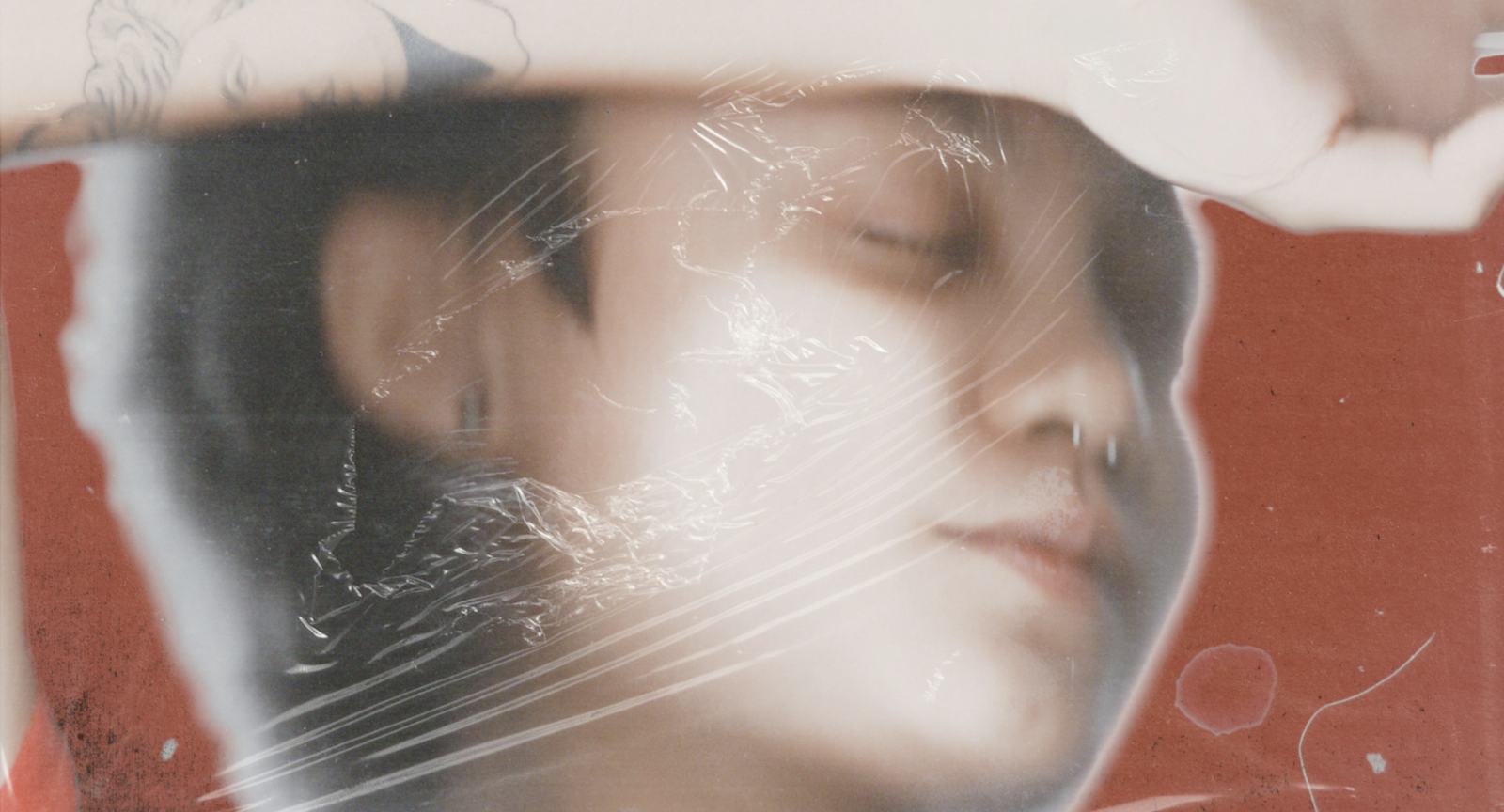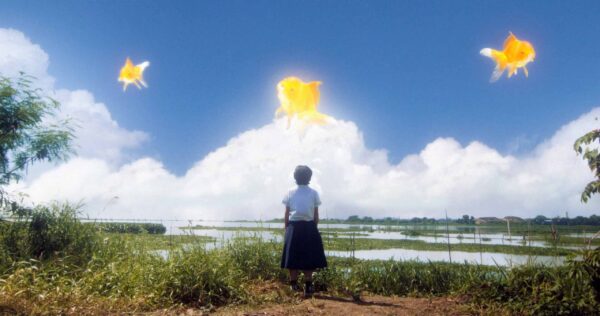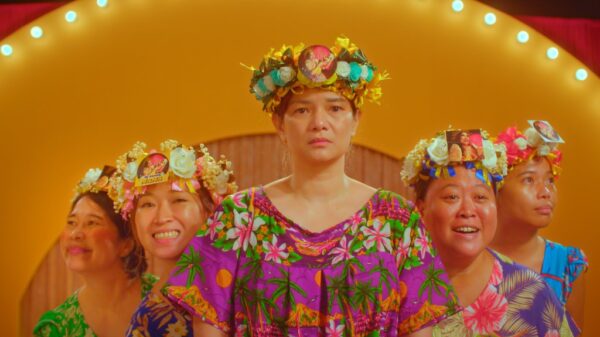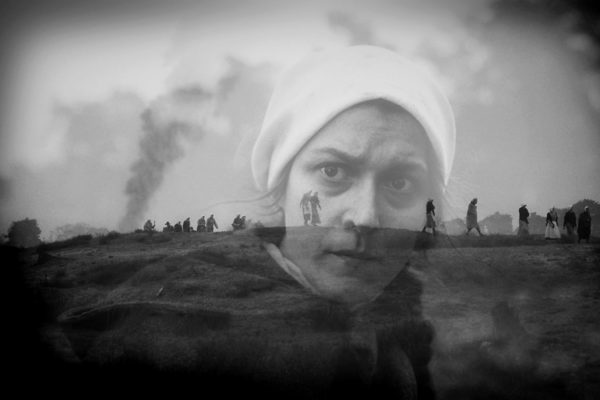The Horror of Memory
It’s Raining Frogs Outside
In her debut film, Maria Estela Paiso presents a walk down memory lane as a horror show. The end of the world is nigh and frogs are raining down from the sky.

Memory is a tricky thing. It is subjective, selective, interchangeable, context-dependent, and all that simultaneously. Maria Estela Paiso’s It’s Raining Frogs Outside delves into these unpredictable layers of the mind, especially those coming to the surface under extreme circumstances. As the finality of life catches up on her, protagonist Maya is confronted with fickle memories of past and present. Rather than using the theme of remembrance to depict a nostalgic look at Maya’s childhood, Paiso presents this walk down memory lane as a horror show in which the central character loses grip on her identity and life.
In the Filipina filmmaker’s debut film, Maya finds herself alone in her childhood home as the world’s end seems near. The Zambales-based house, which once was filled with busy family life, including lively dinners and birthday parties with parents and siblings, has now been abandoned. The film’s enclosed setting underlines the chilling atmosphere: Maya is confined to the walls of her family’s former house, moving between a bed and a chair from which she watches the terror unfolding outside the bedroom window. How this state of loneliness and abandonment came to be for the main character is left in the dark and for the audience to imagine. Is the imminent death of humanity the only possible outcome in a reality where natural forces and laws of physics are out of order? While this and similar questions remain unanswered, the uncertainty the audience experiences isn’t detrimental to the horror unraveling on-screen. Even more so, finding Maya the only person alive emphasises the dire circumstances of her fate.
As fitting for a horror story, a sense of discomfort for the audience is all-encompassing. The uneasiness of the claustrophobic interior is only accelerated by the events transpiring outside of them. The film does not hesitate for a second of its runtime to show the audience the shocking events Maya witnesses. A sense of dread sets in right at the film’s opening when It’s Raining Frogs Outside shows us a shocking downpour of frogs. Not only what happens within the isolated boundaries of Maya’s confinement but also what ensues outside makes the horror of an assured death even more impactful. Dreadful images and sounds of frog bodies splashing onto the ground are present for almost its entire duration.
As the first film from a female filmmaker from the Philippines shown in the Berlinale Shorts section (as of 2022), and the very first film in the Sambal language, It’s Raining Frogs Outside is a landmark of Philippine cinema. Moreover, Paiso is able to embed the uniqueness of her work into cinematic history, on the one hand, exemplifying a singular vision and, on the other, proving how films permanently relate to one another beyond the borders of language, genre definitions, aesthetic choices, or geographical location.
Paiso’s memorable rain of frogs is the precursor of something much more sinister than the other famous version of the meteorological phenomenon previously depicted in cinema: Paul Thomas Anderson’s take, which occurs at two hours and forty-five minutes into Magnolia. While the surprisingly real spectacle, however rarely and on a much smaller scale, implicates chaos, redemption, and forgiveness in the 1999 mosaic feature film, it illustrates pure terror in Paiso’s short and hints at the inescapable end of humanity. Similar to the story from the book of Exodus, in which frogs are sent from God to the Pharaoh and the people of Biblical Egypt as one of the ten plagues, the monsoon of animals seen here is an invading force, symbolising a world out of order.
Looking beyond the intertextuality of American cinema and Biblical texts, this personal Filipino short film centers its investigation on the coping mechanisms of the human mind and body during disaster. Finding herself alone and with no promises of the future, Maya is in a state of monotony. A lack of physical contact, repetitive daily routines, and limited space to move in as the days pass, have made her life void of joy. While this frozen state of existence has taken a toll on her mental health and induces a rather transformative identity crisis, watching the dying frogs makes the impending loss of life even more palpable.
In her solitude, she tries to remember life before—before the rain, before her home stopped feeling like a home, and before she no longer was herself. The following moments play out like a frantic nightmare to the audience. They are ultimately a portrayal of the chaotic state, a decaying consciousness trying to find peace and forgiveness in its last breaths. As the audience is taken on a journey into Maya’s innermost, where her memories of past and present intermingle, reality becomes a blur. The deep dive into a life’s memory’s real and unreal timeline is presented as a collage of images of children’s birthday parties, family gatherings, and more somber responsibilities that come with adulthood. These brief insights into Maya’s life become clearer the further they go back in time.
Not only do Maya’s recollections falter, but her body equally collapses. As she tries to cope with the apocalyptic realities, her body is no longer under her control: her face distorts, her hair falls out, and she imagines her skin melting away more and more every day. This deterioration is shown shockingly, bringing to mind familiar body horror tropes as she imagines a bug crawling into her eye, her skin separating, and her hair pulling herself underwater.
American film scholar Linda Williams argues that the sensational effects of body genre films give “our bodies an actual physical jolt”. 11 Williams, Linda (1991). Film Quarterly. Vol. 44, No. 4, pp. 2-13: Film Bodies: Gender, Genre, and Excess. University of California Press. ↩︎ As a spectacle of bodily access, the body horror genre promises that the audience’s sensations mimic what is seen on screen. Paiso deliberately doesn’t hold back in illustrating Maya’s lost sense of reality, confronting the audience with sensations of discomfort such as itching, suffocation, and the stickiness of melting skin. Through a mixture of computer graphics, underwater stunt work, and impressive body makeup, Maya’s progressing mental and physical decay takes on several forms. Some clever stylistic choices affect the audience similarly to the sense of dismay experienced by the protagonist, successfully broadening the subjectiveness of the experience.
Ultimately, Maria Estela Paiso’s film is a frenzy in which the challenging task of investigating a mind that can no longer make sense of past and present is undertaken by facing the turmoil of this existence head-on. This horrific cinematic chaos adequately reflects the identity crisis in the face of tragedy.




There are no comments yet, be the first!